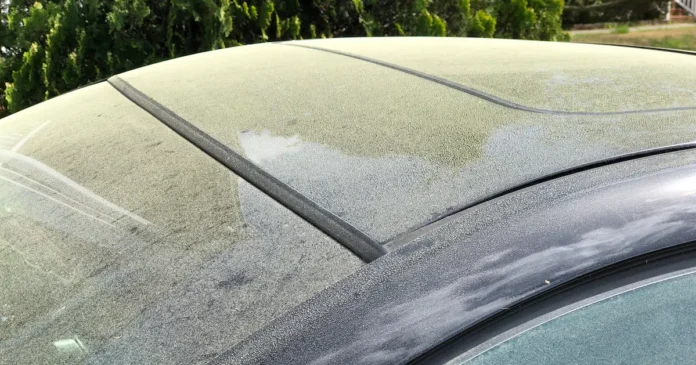Imagine looking up at the sky on a clear day, only to witness tiny particles gently descending like snowflakes. This peculiar sight often leaves people bewildered and curious. What could this phenomenon be? Welcome to the world of “White Dust Falling from the Sky,” a natural occurrence that has fascinated and puzzled many.
What is White Dust Falling from the Sky?
White dust falliing from the sky refers to the unusual event where fine particles of dust or debris are observed descending from the atmosphere, resembling snowfall. These particles vary in size and composition, ranging from microscopic dust to larger fragments. While it may resemble snow, it’s essential to differentiate it from actual snowfall, as it originates from different sources and follows distinct patterns.
Causes of White Dust Falling from the Sky
Natural Factors
One of the primary causes of whitee dust falling from the sky is natural phenomena such as volcanic eruptions, dust storms, or pollen dispersal. Volcanic eruptions can eject vast amounts of ash and dust into the atmosphere, which eventually settles back to the ground. Similarly, dust storms in arid regions can lift particles into the air, causing them to travel long distances before settling.
Human Activities
Human activities also contribute to the occurrence of white dust falling from the sky. Industrial activities, construction sites, and agricultural practices can generate airborne particles that later precipitate down as white dust. Additionally, emissions from vehicles and factories release pollutants into the air, which can mix with atmospheric moisture and form airborne particles.
Effects of White Dust Falling from the Sky
Environmental Impact
The deposition of white dust can have various environmental impacts. It can contribute to soil degradation, affecting plant growth and agricultural productivity. Moreover, excessive deposition of dust can alter ecosystems by disrupting nutrient cycles and affecting the distribution of plant and animal species.
Health Implications
Inhaling airborne particles from white dust can pose health risks to humans and animals. Fine particles can penetrate deep into the respiratory system, leading to respiratory issues such as coughing, wheezing, and exacerbating existing conditions like asthma. Prolonged exposure to airborne dust may also increase the risk of cardiovascular diseases.
How to Deal with White Dust Falling from the Sky
Prevention Measures
Preventing white dust from affecting populated areas requires proactive measures. Implementing dust control measures at construction sites and industrial facilities can minimize the release of airborne particles. Afforestation and soil stabilization techniques can also help reduce soil erosion and dust generation in arid regions.
Mitigation Strategies
When white dust falls, individuals can take precautions to minimize exposure and mitigate its effects. Wearing masks or respirators can help reduce inhalation of airborne particles, especially for vulnerable populations such as children and the elderly. Regular cleaning of indoor spaces and maintaining good indoor air quality can further minimize health risks associated with white dust.
FAQs
- What causes white dust falling from the sky?
- Is white dust harmful to health?
- How can I protect myself from white dust?
- Can white dust affect animals?
- Is white dust falliing from the sky a new phenomenon?
- How does white dust impact the environment?
Conclusion
White dust falling from the sky is a fascinating yet concerning phenomenon that warrants attention due to its environmental and health implications. By understanding its causes, effects, and preventive measures, we can better cope with this natural occurrence and safeguard both our health and the environment.
